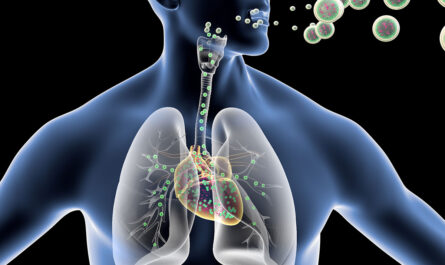
Introduction to Remote Patient Monitoring
Remote patient monitoring (RPM) involves using different types of technologies to monitor patients’ health status and well-being remotely. This allows patients to remain in their homes while still receiving care from medical professionals. Remote monitoring devices transmit important health data like blood pressure, blood sugar levels, weight, pulse, and oxygen levels to providers in real-time. This gives providers valuable insights into patients’ conditions between visits.
Types of Remote Patient Monitoring Devices
Blood Pressure Monitors
One of the most commonly monitored vitals is blood pressure. Remote blood pressure cuffs send readings to tablets, smartphones, or web portals for providers to track. This is especially important for those with hypertension to spot any concerning changes. Some blood pressure monitors have additional features like ECG readings as well.
Blood Glucose Monitors
For those with diabetes, remote blood glucose monitors are essential for keeping tabs on blood sugar levels. Continuous glucose monitoring systems have sensors patients wear that transmit readings continuously. Others involve scanning a test strip in a monitor that uploads readings. Both allow providers to spot trends and ensure levels stay in target ranges.
Weight Scales
Weight fluctuations can be an early sign of certain health issues like fluid retention in heart failure patients. Bluetooth-enabled smart scales send weight readings to connected devices. This permits close monitoring of any gains or losses outside of normal ranges.
Pulse Oximeters
Measuring oxygen saturation levels is important for pulmonary conditions like COPD and asthma. Remote pulse oximeters clip onto the finger and transmit readings. This helps providers determine if supplemental oxygen is needed or if symptoms are being appropriately managed.
ECG Monitors
For heart conditions like arrhythmias or congestive heart failure, remote ECG monitors are useful. Holter monitors or event recorders can detect abnormalities and wirelessly send ECG readings and reports to providers. This provides a clearer picture of cardiac status between visits.
How Remote Monitoring Improves Outcomes
Earlier Intervention
By monitoring vitals and catching any concerning changes in real-time, providers can intervene sooner with treatment adjustments. This prevents conditions from escalating and the need for emergency care or hospitalization. Early intervention leads to better outcomes overall.
Increased Treatment Adherence
Secure patient portals and apps that record and transmit readings also serve as reminders to take medications and perform self-care tasks like exercise regularly. This fosters better treatment adherence which is critical for managing chronic conditions successfully long-term.
More Effective Chronic Disease Management
Providers gain a bigger picture of how conditions fluctuate over time based on lifestyle factors with the frequent measurements remote monitoring supplies. This enables more tailored, data-driven care plans that better meet patients’ needs. Remote monitoring turns episodic office visits into continuous care.
Reduced Healthcare Costs
By preventing expensive emergency room visits and hospital readmissions through early detection of issues, remote monitoring solutions save the healthcare system significant costs in the long run. They shift more care to the community setting, lowering overall expenditures on avoidable acute care.
Patient Empowerment and Satisfaction
Knowing vital signs are being monitored closely regardless of location gives patients comfort and empowerment over their health. It boosts satisfaction by allowing independence at home versus spending significant time receiving care in facilities. Remote monitoring enhances quality of life while still ensuring safety.
Technology Advancements and Remote Monitoring
5G and IoT
The implementation of 5G networks and further advancements in internet of things (IoT) technology will propel remote monitoring further. 5G’s higher speeds and lower latency will transmit voluminous vital signs and health data seamlessly. Integrated devices and sensors will generate even more robust real-time insights.
AI and Machine Learning
Artificial intelligence capabilities like machine learning algorithms will progress remote monitoring analytics. Early warning detection systems using AI will autonomously notify providers of any concerning changes requiring a prompt response. Predictive algorithms may also forecast future health risks or exacerbations to preempt problems.
Wearable Devices
The rise of wearable health technology provides growing remote monitoring potential. Smartwatches can monitor heart rate, ECG, blood oxygen, activity levels, and more to compile a wealth of vital statistics. Fitness trackers generate reams of passive data to flag subtle downturns in trends. Implantables offer additional monitoring avenues.
Virtual Care Integration
As digital health services expand, virtual care modes will increasingly encompass remote monitoring capabilities. Virtual visits will review transmitted patient data in depth. Digital telehealth platforms integrate remote monitoring stats seamlessly into patient profiles to guide virtual care management. Specialized monitoring smartphones and tablets become conduits for enhanced virtual care delivery at home.
Industry collaboration will ensure innovations in remote monitoring, 5G, AI, wearables and virtual care complement each other. This will produce a robust, affordable, streamlined remote patient management system that profoundly strengthens healthcare accessibility, quality and affordability for all. Remote monitoring points towards a promising future with technology empowering preventative population health on an unprecedented scale.
In Summary, as healthcare systems worldwide face challenges such as an aging population and rising chronic disease rates, remote patient monitoring devices emerge as critical tools for managing these complex healthcare needs. By enabling continuous monitoring and timely interventions, these devices have the potential to transform healthcare delivery and improve patient outcomes.
*Note:
- Source: Coherent Market Insights, Public sources, Desk research
- We have leveraged AI tools to mine information and compile it
